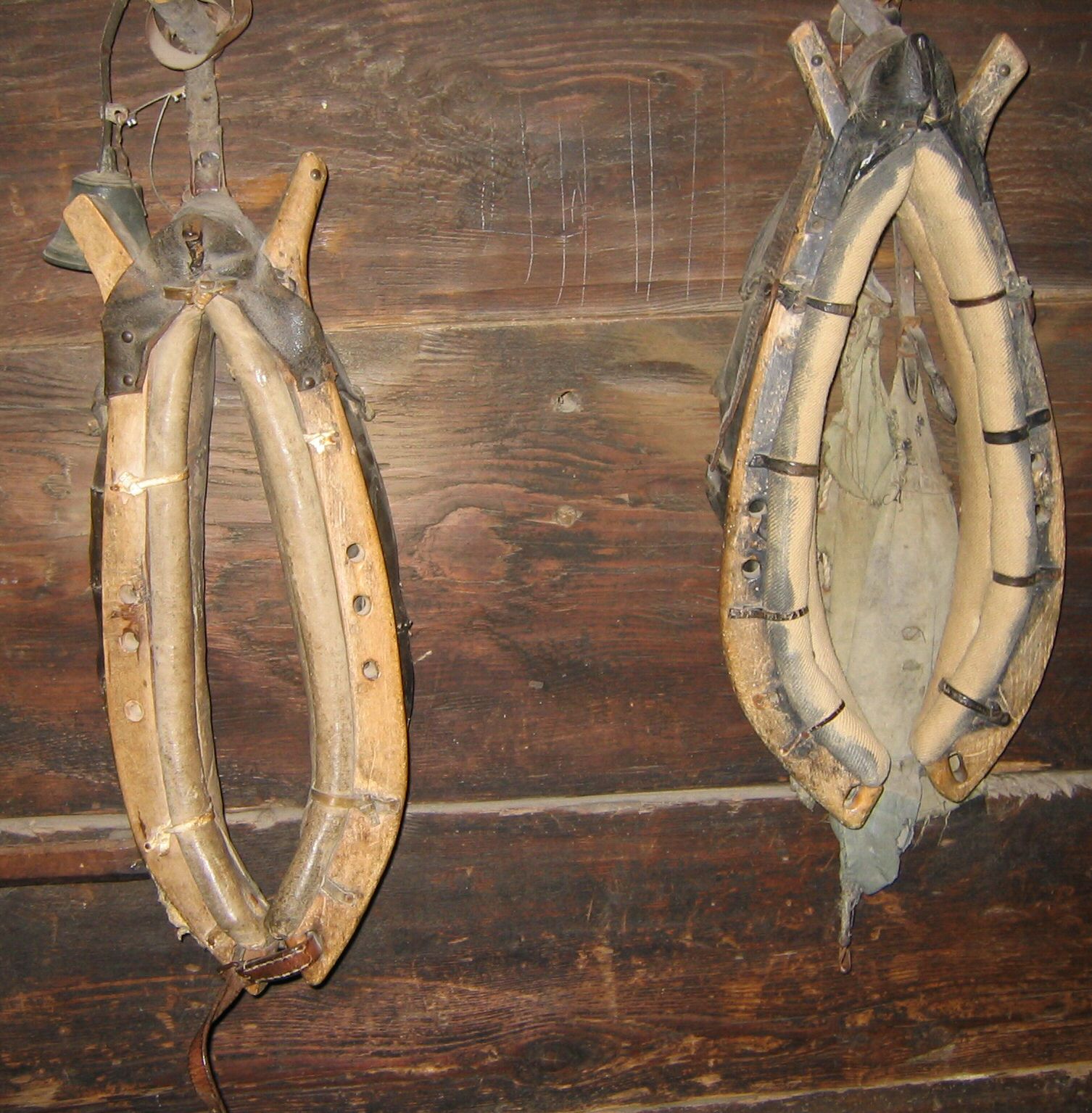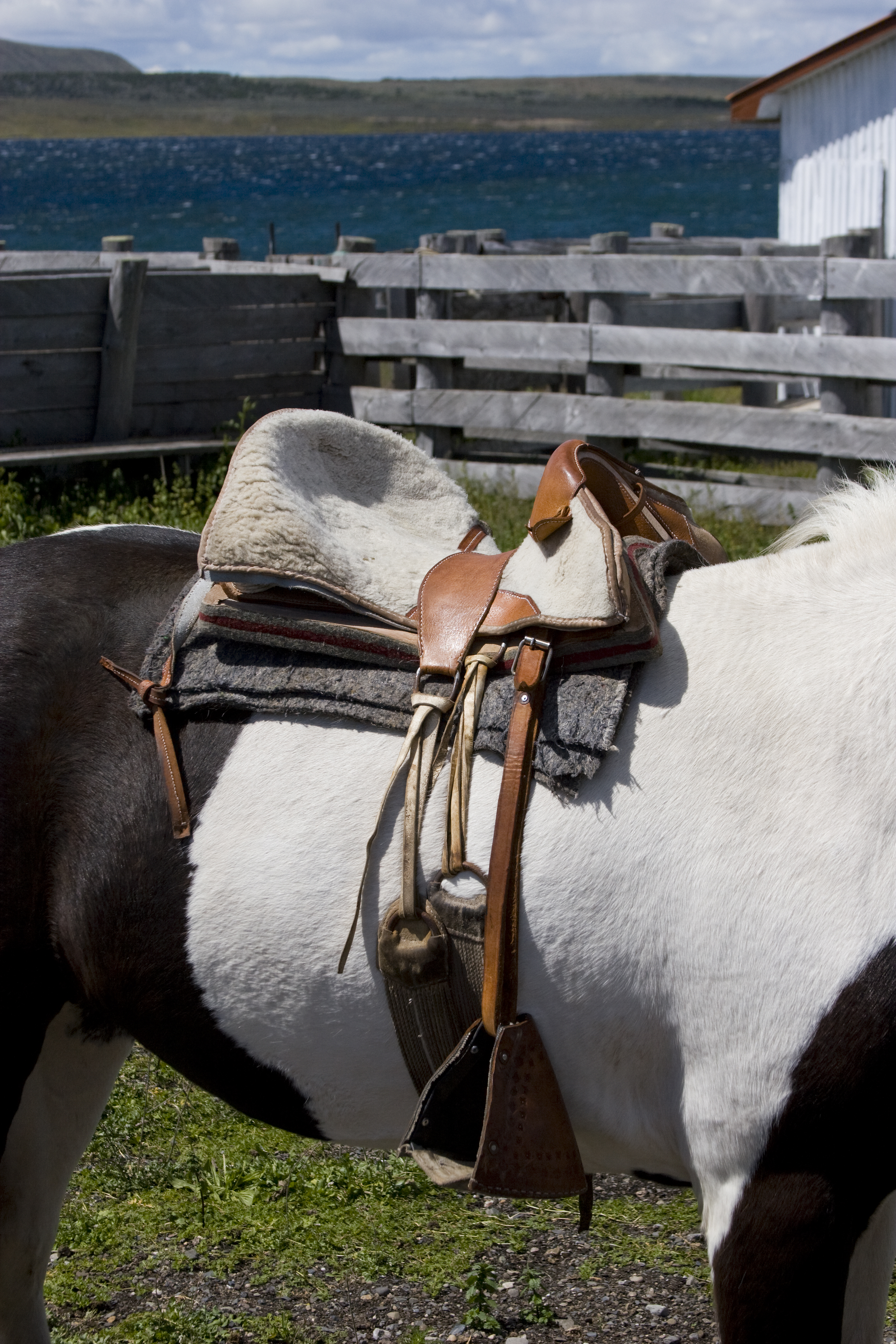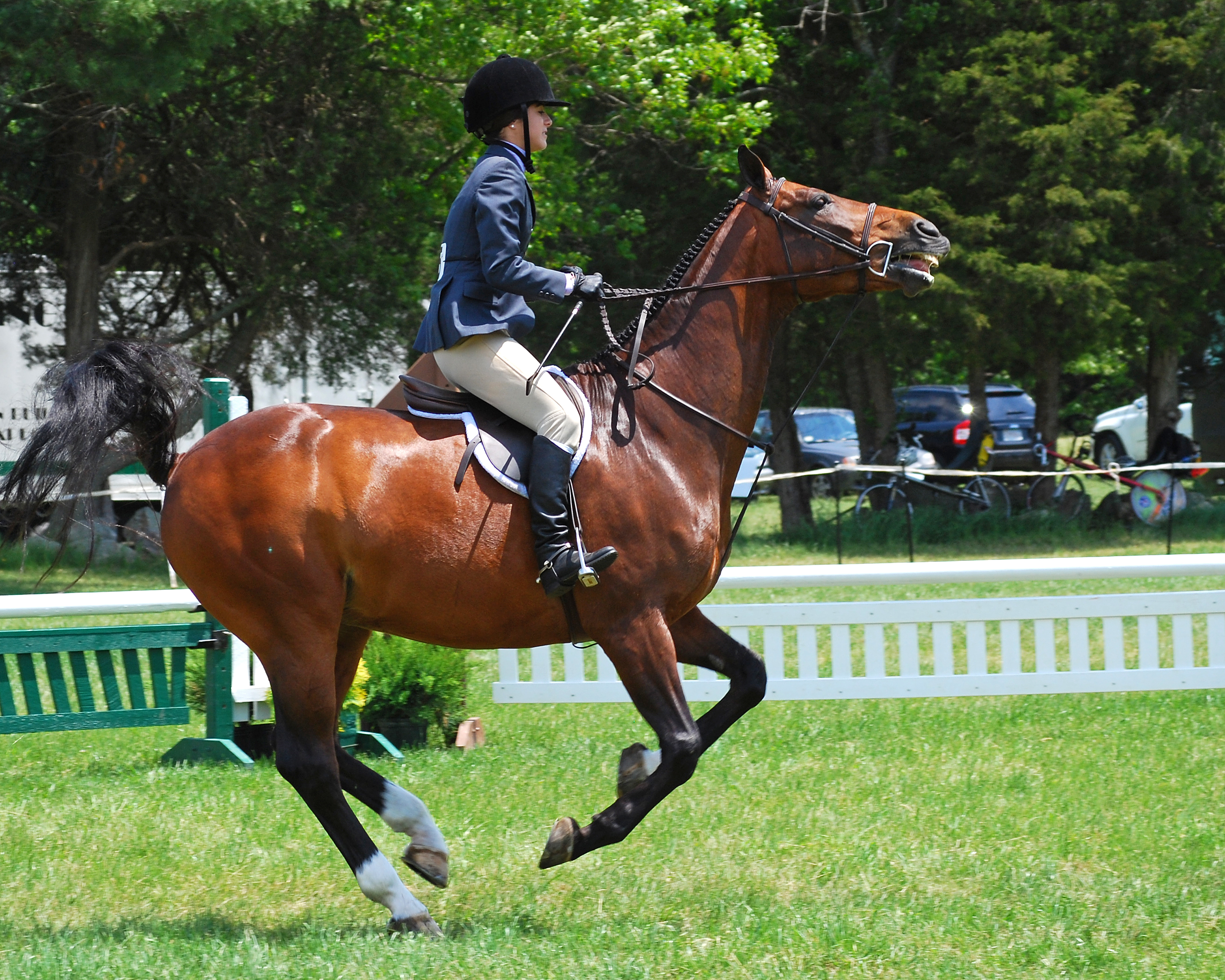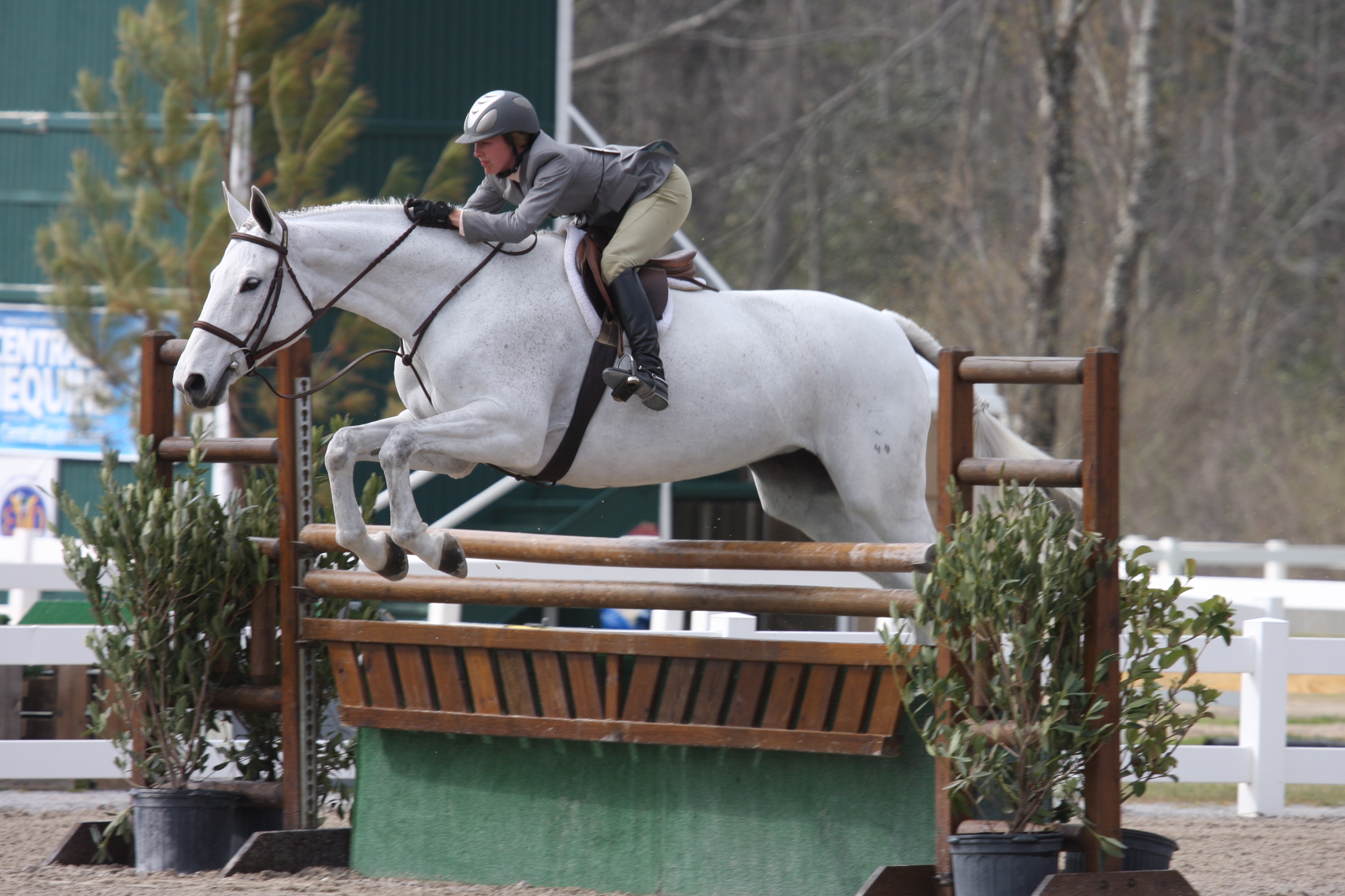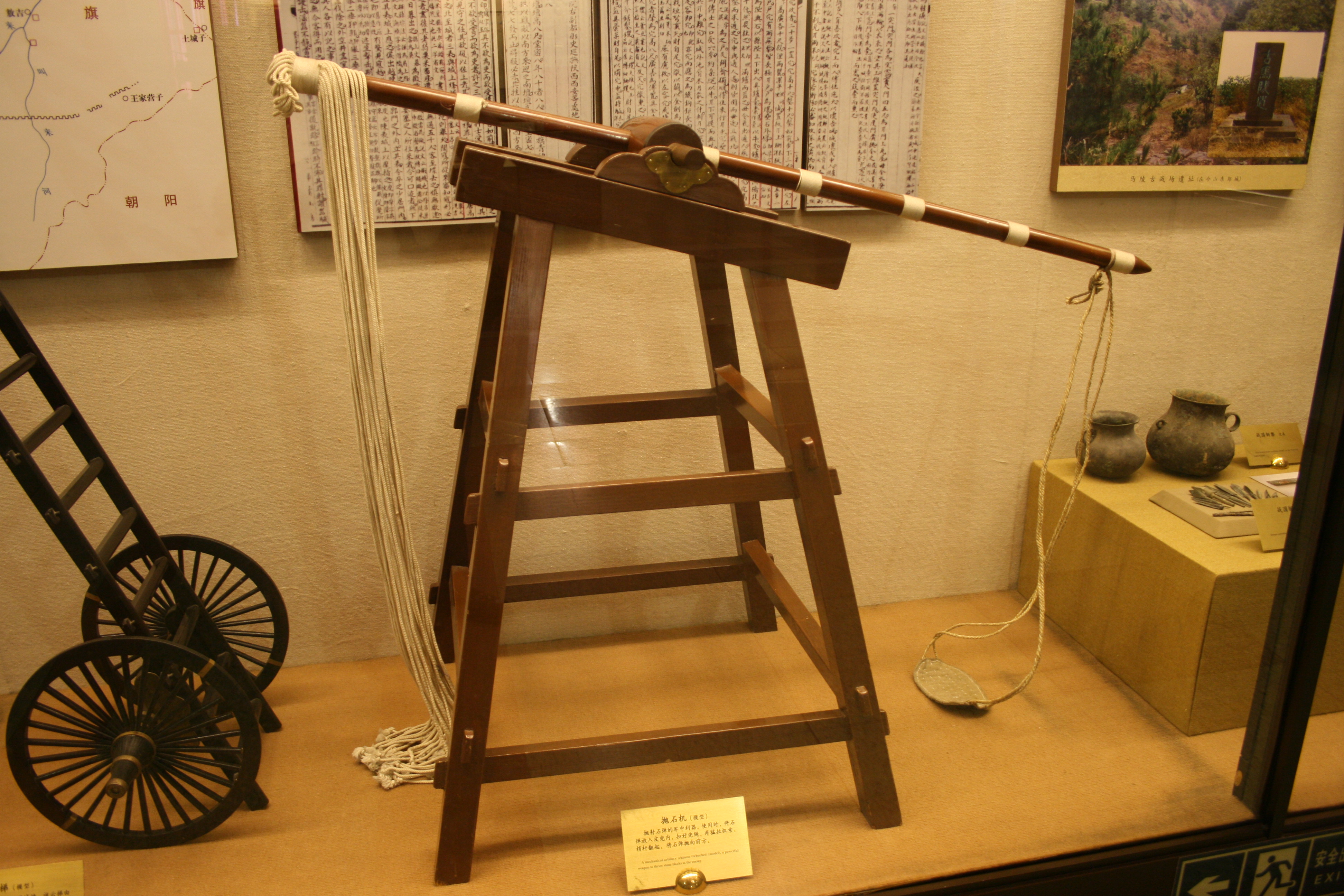|
Breastcollar
A breastplate (used interchangeably with breastcollar, breaststrap and breastgirth) is a piece of riding equipment used on horses. Its purpose is to keep the saddle or harness from sliding back. On riding horses, it is most helpful on horses with large shoulders and a flat ribcage. It is also a safety feature, especially on cross-country, should a rider's girth or billets break, as the rider will have enough time to stop the horse and dismount before the saddle slipped off the animal's back or underneath its belly. The breastplate is used on both English and Western saddles. When used in English riding, the hunting breastplate is made of thinner straps of leather, as is the western style used for horse shows. Working western horses in disciplines that involve work with cattle use a thicker, sturdier style. History When the Spanish Conquistador Cortez invaded Mexico in 1519 his small group of cavalry men all rode the old centerfire rigged War Saddle. Since the saddle was pr ... [...More Info...] [...Related Items...] OR: [Wikipedia] [Google] [Baidu] |
Horse Harness
Horse harness is a device that connects a horse to a vehicle or another type of load. There are two main categories of horse harness: (1) the "breaststrap" or "breastcollar" design, and (2) the collar and hames design. For light work, such as horse show competition where light carts are used, a harness needs only a breastcollar. It can only be used for lighter hauling, since it places the weight of the load on the sternum of the horse and the nearby windpipe. This is not the heaviest skeletal area; also heavy loads can constrict the windpipe and reduce a horse's air supply. By contrast, the collar and harness places the weight of the load onto the horse's shoulders, and without any restriction on the air supply. For heavy hauling, the harness must include a horse collar to allow the animal to use its full weight and strength. Harness components designed for other animals (such as the yoke used with oxen) are not suitable for horses and will not allow the horse to work effi ... [...More Info...] [...Related Items...] OR: [Wikipedia] [Google] [Baidu] |
Horse Collar
A horse collar is a part of a horse harness that is used to distribute the load around a horse's neck and shoulders when pulling a wagon or plough. The collar often supports and pads a pair of curved metal or wooden pieces, called hames, to which the traces of the harness are attached. The collar allows the horse to use its full strength when pulling, essentially enabling the animal to push forward with its hindquarters into the collar. If wearing a yoke or a breastcollar, the horse had to pull with its less-powerful shoulders. The collar had another advantage over the yoke as it reduced pressure on the horse's windpipe. From the time of the invention of the horse collar, horses became more valuable for plowing and pulling. When the horse was harnessed in the collar, the horse could apply 50% more power to a task in a given time period than could an ox, due to the horse's greater speed.Needham, Volume 4, Part 2, 312. Additionally, horses generally have greater endurance tha ... [...More Info...] [...Related Items...] OR: [Wikipedia] [Google] [Baidu] |
Saddle
The saddle is a supportive structure for a rider of an animal, fastened to an animal's back by a girth. The most common type is equestrian. However, specialized saddles have been created for oxen, camels and other animals. It is not known precisely when riders first began to use some sort of padding or protection, but a blanket attached by some form of surcingle or girth was probably the first "saddle", followed later by more elaborate padded designs. The solid saddle tree was a later invention, and though early stirrup designs predated the invention of the solid tree, the paired stirrup, which attached to the tree, was the last element of the saddle to reach the basic form that is still used today. Today, modern saddles come in a wide variety of styles, each designed for a specific equestrianism discipline, and require careful fit to both the rider and the horse. Proper saddle care can extend the useful life of a saddle, often for decades. The saddle was a crucial step ... [...More Info...] [...Related Items...] OR: [Wikipedia] [Google] [Baidu] |
Endurance Riding
Endurance riding is an equestrian sport based on controlled long-distance races. It is one of the international competitions recognized by the FEI. There are endurance rides worldwide. Endurance rides can be any distance, though they are rarely over 160 km for a one-day competition. There are two main types of long-distance riding, competitive trail riding and endurance rides. In an endurance ride, discussed in this article, the winning horse is the first one to cross the finish line while stopping periodically to pass a veterinary check that deems the animal in good health and fit to continue. As with human marathon running, many riders will participate to improve their horse's personal best performance and consider finishing the distance with a proper vet completion record to be a "win". In the United States, most endurance rides are either 50 or long. Shorter rides, called Limited Distance rides (LD), are organized for new riders to the sport or young horses bei ... [...More Info...] [...Related Items...] OR: [Wikipedia] [Google] [Baidu] |
Nylon
Nylon is a generic designation for a family of synthetic polymers composed of polyamides ( repeating units linked by amide links).The polyamides may be aliphatic or semi-aromatic. Nylon is a silk-like thermoplastic, generally made from petroleum, that can be melt-processed into fibers, films, or shapes. Nylon polymers can be mixed with a wide variety of additives to achieve many property variations. Nylon polymers have found significant commercial applications in fabric and fibers (apparel, flooring and rubber reinforcement), in shapes (molded parts for cars, electrical equipment, etc.), and in films (mostly for food packaging). History DuPont and the invention of nylon Researchers at DuPont began developing cellulose based fibers, culminating in the synthetic fiber rayon. DuPont's experience with rayon was an important precursor to its development and marketing of nylon. DuPont's invention of nylon spanned an eleven-year period, ranging from the initial researc ... [...More Info...] [...Related Items...] OR: [Wikipedia] [Google] [Baidu] |
Campdrafting
Campdrafting is a unique Australian sport involving a horse and rider working cattle. The riding style is Australian stock, somewhat akin to American Western riding and the event is similar to the American stock horse events such as cutting, working cow horse, team penning, and ranch sorting. In a campdrafting competition, a rider on horseback must "cut out" one beast from the mob of cattle in the yard or the "camp" and block and turn the beast at least two or three times to prove to the judge that they have the beast under control; then take it out of the yard and through a course around pegs involving right and left hand turns in a figure eight, before guiding it through two pegs known as "the gate". The outside course must be completed in less than 40 seconds. Events for juniors 8 years and under 13 years have one sound beast in the camp or yard at all times. In other events it is recommended that there shall be a minimum of six head of sound stock in the camp at any time ... [...More Info...] [...Related Items...] OR: [Wikipedia] [Google] [Baidu] |
Girth (tack)
A girth, sometimes called a cinch ( Western riding), is a piece of equipment used to keep the saddle in place on a horse or other animal. It passes under the barrel of the equine, usually attached to the saddle on both sides by two or three leather straps called billets. Girths are used on Australian and English saddles, while western saddles and many pack saddles have a cinch, which is fastened to the saddle by a single wide leather strap on each side, called a latigo. Retrieved on 17 March 2009 Although a girth is often enough to keep a well-fitting saddle in place, other pieces of equipment are also used in jumping or speed sports such as , |
Martingale (tack)
A martingale is any of several designs of tack that are used on horses to control head carriage. Martingales may be seen in a wide variety of equestrian disciplines, both riding and driving. Rules for their use vary widely; in some disciplines they are never used, others allow them for schooling but not in judged performance, and some organizations allow certain designs in competition. The two most common types of martingale, the standing and the running, are used to control the horse's head height, and to prevent the horse from throwing its head so high that the rider gets hit in the face by the horse's poll or upper neck. When a horse's head gets above a desired height, the martingale places pressure on the head so that it becomes more difficult or impossible to raise it higher. The standing martingale The standing martingale, also known as a "tiedown" or a "head check",The Pony Club Association of NSW, “Handbook”, Simpson & Sons, 1982 has a single strap which is at ... [...More Info...] [...Related Items...] OR: [Wikipedia] [Google] [Baidu] |
Fox Hunters
Fox hunting is an activity involving the tracking, chase and, if caught, the killing of a fox, traditionally a red fox, by trained foxhounds or other scent hounds. A group of unarmed followers, led by a "master of foxhounds" (or "master of hounds"), follow the hounds on foot or on horseback. In Australia, the term also refers to the hunting of foxes with firearms, similar to deer hunting. Fox hunting with hounds, as a formalised activity, originated in England in the sixteenth century, in a form very similar to that practised until February 2005, when a law banning the activity in England and Wales came into force. A ban on hunting in Scotland had been passed in 2002, but it continues to be within the law in Northern Ireland and several other areas, including Australia, Canada, France, the Republic of Ireland and the United States. The sport is controversial, particularly in the United Kingdom. Proponents of fox hunting view it as an important part of rural culture, and useful ... [...More Info...] [...Related Items...] OR: [Wikipedia] [Google] [Baidu] |
Show Hunter
The Hunter division is a branch of horse show competition that is judged on the horse's performance, soundness and when indicated, conformation, suitability or manners. A "show hunter" is a horse that competes in this division. Show hunters, ideally, show many qualities that were rewarded in the fox hunting field such as manners, fluid movement, and correct jumping style. They are shown in hunt seat style tack. Any breed can be exhibited, but at the highest levels they are usually of Warmblood or Thoroughbred type, though a hunter-style pony is also seen in youth classes. Some classes are restricted to horses of certain breeds or height. In the United States, show hunters are primarily exhibited over fences in various divisions, including Green Hunter, Working Hunter, Conformation Hunter and so on, with a few additional classes offered for horses shown in-hand or on the flat, known as "Hunter Under Saddle." In the United Kingdom, competition over fences is called "Working Hun ... [...More Info...] [...Related Items...] OR: [Wikipedia] [Google] [Baidu] |
Bricole Et Sellette
The mangonel, also called the traction trebuchet, was a type of trebuchet used in Ancient China starting from the Warring States period, and later across Eurasia by the 6th century AD. Unlike the later counterweight trebuchet, the mangonel operated on manpower pulling cords attached to a lever and sling to launch projectiles. Although the mangonel required more men to function, it was also less complex and faster to reload than the torsion-powered onager which it replaced in early Medieval Europe. It was replaced as the primary siege weapon in the 12th and 13th centuries by the counterweight trebuchet. A common misconception about the mangonel is that it was a torsion siege engine. Etymology ''Mangonel'' is probably derived from the Greek ''mangana'', "a generic term for construction machinery." It could also be derived from ''mangon'', a French hard stone found in the south of France. In Latin it is called a ''manganum'', in French a ''manganeau'', and in English a ''mangonel ... [...More Info...] [...Related Items...] OR: [Wikipedia] [Google] [Baidu] |


